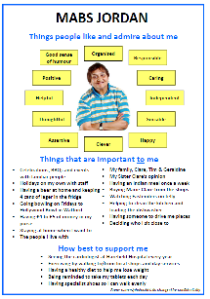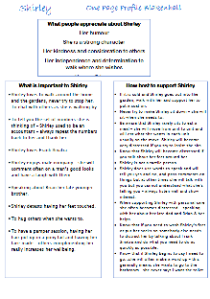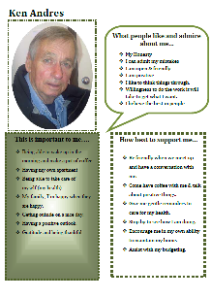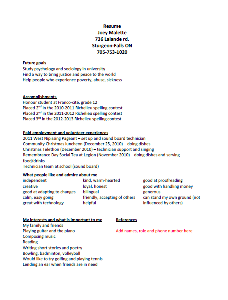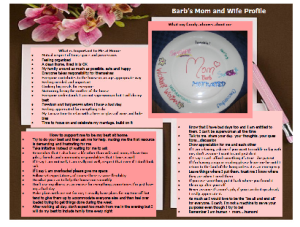An example of how a one-page profile can help empower a person with learning disabilities to be more assertive and assume greater control as well as helping raise their self-esteem.
Written by Sarah Macey
Mabs is a 49 year-old woman with a mild learning disability. She used to live with her parents but after a short respite stay in a residential service Mabs blossomed and her parents agreed to a permanent move 22 years ago. Mabs certainly knows what she wants to do. She enjoys shopping, going to Indian or Chinese restaurants, buying magazines and having the odd glass of wine. Mabs did not have a one-page profile when she moved from her parents’ house as they always structured her routines and knew her preferences. The staff team at her new home created a very clinical profile for Mabs which focused on her specific needs, medical data and activity preferences. In early 2011, parental influence on Mabs waned due to their declining health, allowing Mabs to be more assertive and to assume control over more aspects of her life. She developed a one-page profile with her keyworker to help with this. The keyworker was encouraged to concentrate on developing a positive description of Mabs without reference to her medical or support needs. Mabs found it difficult to use words to describe herself, other than saying she was ‘gorgeous’. She did not have the same difficulty when describing others, however. The keyworker prompted Mabs by asking her what her mother and sister thought of her. When this approach seemed to work, the questions were extended to include what Mabs thought the staff members might say about her. A written profile was created with a central photograph surrounded with personality words. The profile also contained a list of the things that are important ‘for’ (to stay safe and healthy) and ‘to’ (to be happy and empowered) Mabs, the latter being far longer. Mabs’ one-page profile has definitely improved the view she has of herself. In the ‘what people like and admire about me’ section Mabs is described as happy, thoughtful, helpful, sociable, independent, assertive, clever – the list goes on! The profile has helped to raise her self-esteem and feeling of well-being. From a staff perspective, the one-page profile reaffirms the view of Mabs as a lovely character, without the distraction of her health, behaviour or support needs.

